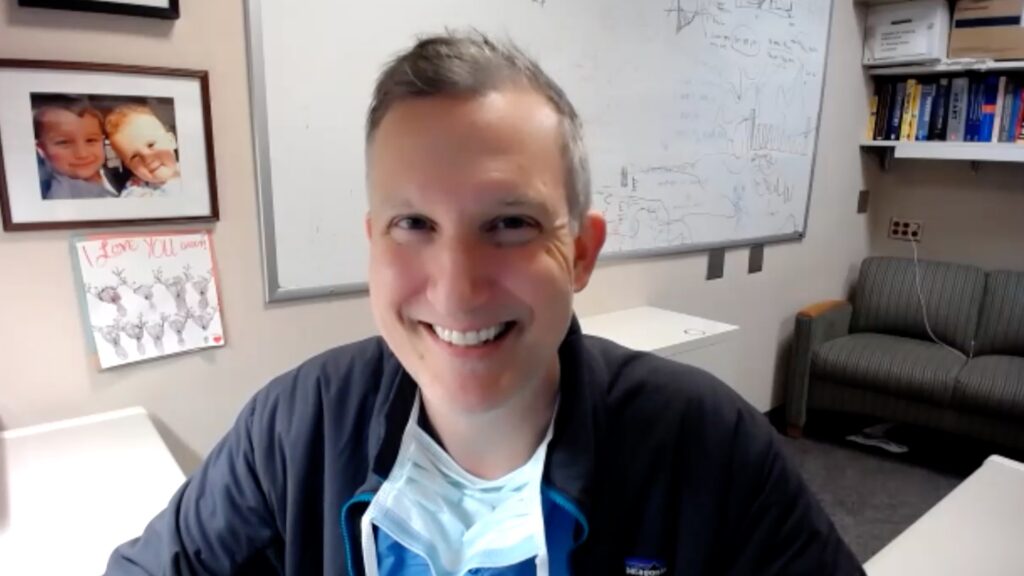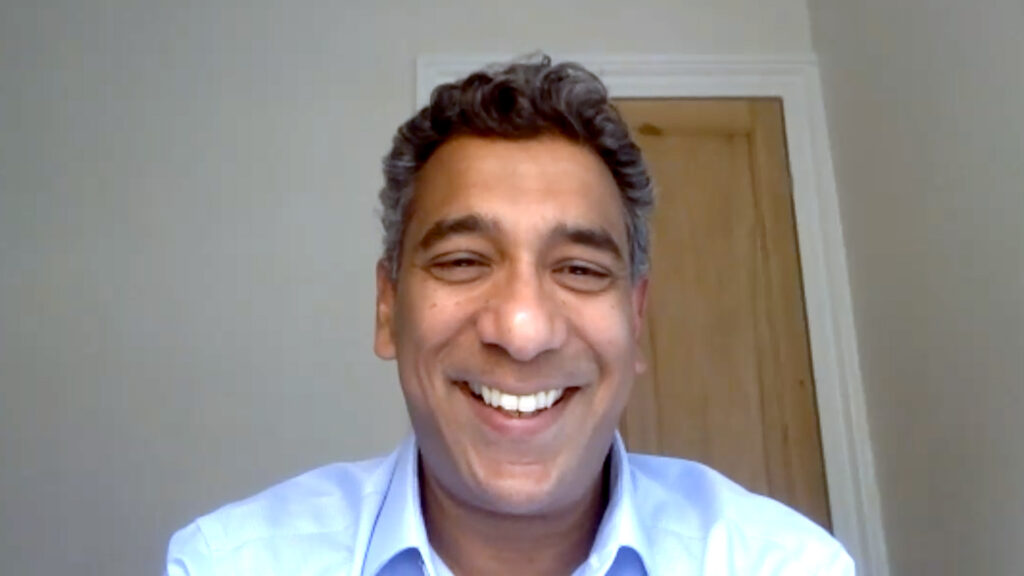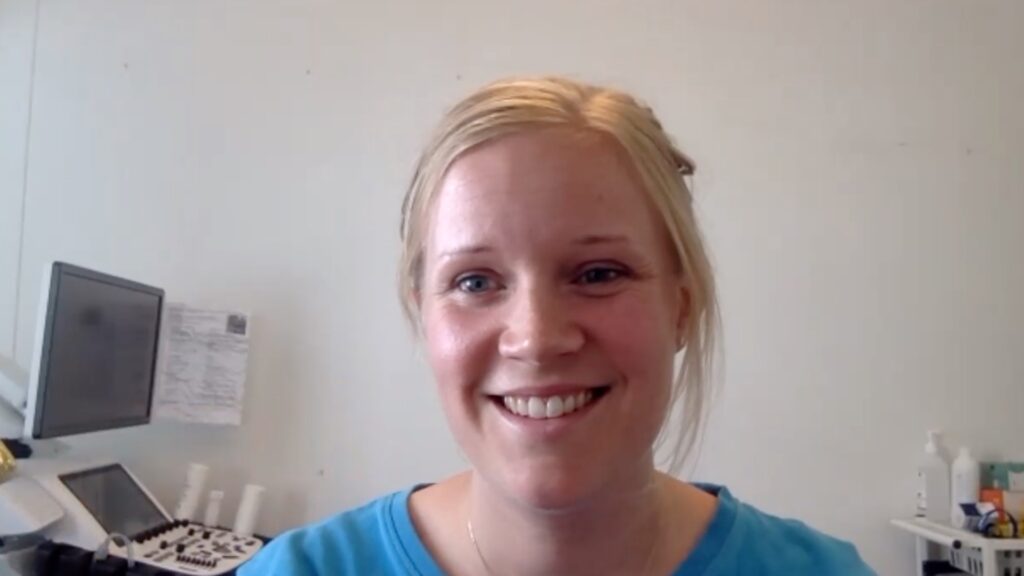Heart failure with preserved ejection fraction (HFpEF) is a hemodynamic disorder characterized by an elevation of left ventricular filling pressures. This trial assessed the ability of dapagliflozin, a sodium-glucose co-transporter 2 inhibitor (SGLT2i), to reduce this elevation. In this touchCARDIO interview, we speak with Dr Barry Borlaug (Mayo Clinic, Rochester, MN, USA) to discuss the purpose and findings of this hemodynamic study as well as the likely clinical impact.
The abstract entitled ‘Evaluation Of The Mechanism Of Benefit For Dapagliflozin In Heart Failure With Preserved Ejection Fraction: An Invasive Hemodynamic Randomized Trial’ was presented at ACC.23 Together With WCC (ACC.23/WCC) in New Orleans, 4–6 March 2023
Questions:
- What is dapagliflozin’s mechanism of action, and what is the rationale for using it as a treatment option for heart failure with preserved ejection fraction? (0:17)
- What were the aims, design and eligibility criteria of the trial? (1:25)
- What were the primary and secondary endpoints and how well were they achieved? (2:51)
- What will be the likely clinical impact of these findings? (5:54)
- What questions remain unanswered and what future studies are planned? (7:20)
Disclosures: Barry Borlaug is a consultant for Aria, Boehringer Ingelheim, Edwards, Eli Lilly, Imbria, Merck and VADovations, and has received grant/research support from Astra Zeneca, Corvia, GlaxoSmith Kline, Medtronic, Mesoblast, NIH/NHLBI, Novo Nordisk and Tenax.
Support: Interview and filming supported by Touch Medical Media. Interview conducted by Danielle Crosby.
Filmed as a highlight of ACC 2023
Access more content on Heart Failure here
Transcript:
My name is Barry Borlaug. I’m a cardiologist and Professor of Medicine at Mayo Clinic in Rochester, Minnesota.
Q: What is dapagliflozin’s mechanism of action, and what is the rationale for using it as a treatment option for heart failure with preserved ejection fraction?
Well, dapagliflozin is an SGLT2 inhibitor, so it acts in the kidneys to decrease the uptake of glucose. So people lose glucose and sodium in the urine. This can cause a negative energy balance. It can lead to some modest weight loss, but it does a lot of other things too that we don’t completely understand. There’s a lot of interest that maybe it enhances, in most cells of the body, nutrient deprivation signalling pathways, which may have a bunch of favourable effects on a variety of different tissues, including the heart. So it’s not completely understood from the cellular mechanism and remains a topic of intense study and debate. However, We were interested in trying to better understand how SGLT2 inhibitors, like dapagliflozin, could improve the hemodynamic abnormalities that underlie heart failure with preserved ejection fraction.
Q: What were the aims, design and eligibility criteria of the trial?
HFpEF is caused by many things, but fundamentally, it’s a hemodynamic disorder. It’s characterized by an elevation in left ventricular filling pressures at rest, and especially during exercise. This is really the sine qua non, and we hypothesized that dapagliflozin may favorably reduce this elevation in filling pressures at rest and during exercise. So that was the goal.
This was a double blind, placebo controlled trial of dapagliflozin or placebo in patients with HFpEF where we performed invasive hemodynamic exercise testing using high fidelity, solid state micromanometers prior to treatment at baseline and then after 24 weeks of treatment with dapagliflozin or placebo. We enrolled patients with heart failure with preserved ejection fraction defined by an EF of 50% or greater. They had class two or three symptoms of heart failure by the New York Heart association, and they were all required to display an elevation in pulmonary capillary wedge pressure during exercise to the pathologic level of 25 millimeters of mercury.
Q: What were the primary and secondary endpoints and how well were they achieved?
The primary endpoint of the trial was the pulmonary capillary wedge pressure, which is a measure of left ventricular filling pressure, incorporating the data at rest and exercise because these are both important. Measured after 24 weeks of treatment with dapagliflozin versus placebo. We observed that there was a statistically significant improvement or reduction in blunting of the increase in cardiac filling pressures at rest and during exercise following treatment with dapagliflozin as compared with placebo. The effect size was a 3.5 millimetre mercury reduction in resting pulmonary wedge pressure and a more impressive 6 millimetre mercury reduction in exercise wedge pressure. So it’s about a 20% reduction in these hemodynamic abnormalities that really drive disease severity and heart failure with preserved ejection fraction.
We also looked at some key secondary endpoints. We looked at pulmonary artery pressures and right atrial pressures, again, incorporating measurements at both rest and exercise. These two were also reduced by dapagliflozin as compared with placebo. We measured measures of blood volume. So there is evidence that SGLT2 inhibitors like dapagliflozin cause reduction in plasma volume and an increase in red cell mass from prior studies. We performed direct measurements of total blood volume, plasma volume and red cell volume using a radiolabeled indicator dilution technique. We saw that there was a significant reduction in plasma volume with dapagliflozin, but there was no statistically significant change in total blood volume or red cell volume. Total blood volume tended to decrease, but there was actually no effect on red blood cell volume, which was a somewhat surprising finding.
Finally, we looked at a simple measure, body weight, which we know from other trials, usually is reduced by maybe 1 and 1/2 to 2 kilograms. In our study, it was a little greater. Our patients were a bit more obese. The mean BMI was around 35, and we saw as compared with placebo, a 3.5 kilogram reduction in body weight with dapagliflozin. Interestingly, in exploratory mechanistic analysis, we observed that there was a significant correlation between the magnitude of improvement in wedge pressure and the amount of weight lost, which was actually stronger than the reduction in plasma volume. So interesting and it again supports the importance of weight loss as a treatment. Certainly we fulfilled our primary endpoint criteria and we saw what we were hoping to see, which was a favourable hemodynamic effect of dapagliflozin.
Q: What will be the likely clinical impact of these findings?
We already know from large cardiovascular outcome trials that dapagliflozin and other SGLT2 inhibitors, like empagliflozin, reduce the risk of heart failure hospitalization. So that answers the question of whether we should treat. And that the answer there is yes, we should. It’s now been shown in two large trials. But what we haven’t known is why and how. How does the medicine help? Why does it help? What’s the mechanism? That provides a much more deeper understanding of why and why we should use these medicines. It can be really helpful on an individual patient level to determine who best should receive this medicine, maybe others who would be more marginal candidates based on understanding the mechanism of action. It can help us to think about other potential novel treatments that might do even better, or they might complement SGLT2 inhibitors or work through other mechanisms to achieve even greater benefits. We know that these medicines really do help people substantially with a 20% reduction in the primary outcomes trials. But we could still do better. These people still have a substantial risk. And substantial impairments in quality of life. So I think understanding the mechanisms can help us in that regard as well.
Q: What questions remain unanswered and what future studies are planned?
You know, I think the hemodynamics we clearly show are improved, but we don’t yet completely understand why. Hemodynamic abnormalities are caused by many things, including myocardial dysfunction and alterations in blood volume. We measured that and that went down a little bit, but not substantial enough to explain the effects that we saw. There are also differences in the distribution of blood volume, which are related to abnormalities and venous capacitance changes in the sympathetic nervous system. There are, as I mentioned, myocardial problems at rest and with exercise that can be related to different things, either fibrosis or inflammation or ischaemia. All of these still remain on the table. We don’t know which of these were potentially improved with SGLT2 inhibitors and those would be worthy of further study. Other cardiometabolic drugs might also be helpful and could be additive or synergistic to SGLT2 inhibitors. There are other trials that are ongoing with medicines like GLP 1 receptor agonists in the STEP trials and the combined GLP 1 receptor agonist, GIP in the SUMMIT trial, tirzepatide. So a lot of interest in drugs like this and others that affect the cardiometabolic axis and HFpEF. I think that these results, in tandem with the clinical trials, really support further efforts to better understand how these can help our patients with HFpEF, particularly people with the more cardiometabolic obese HFpEF, which is so common in the US, but frankly worldwide as well.
Subtitles and transcript are autogenerated













